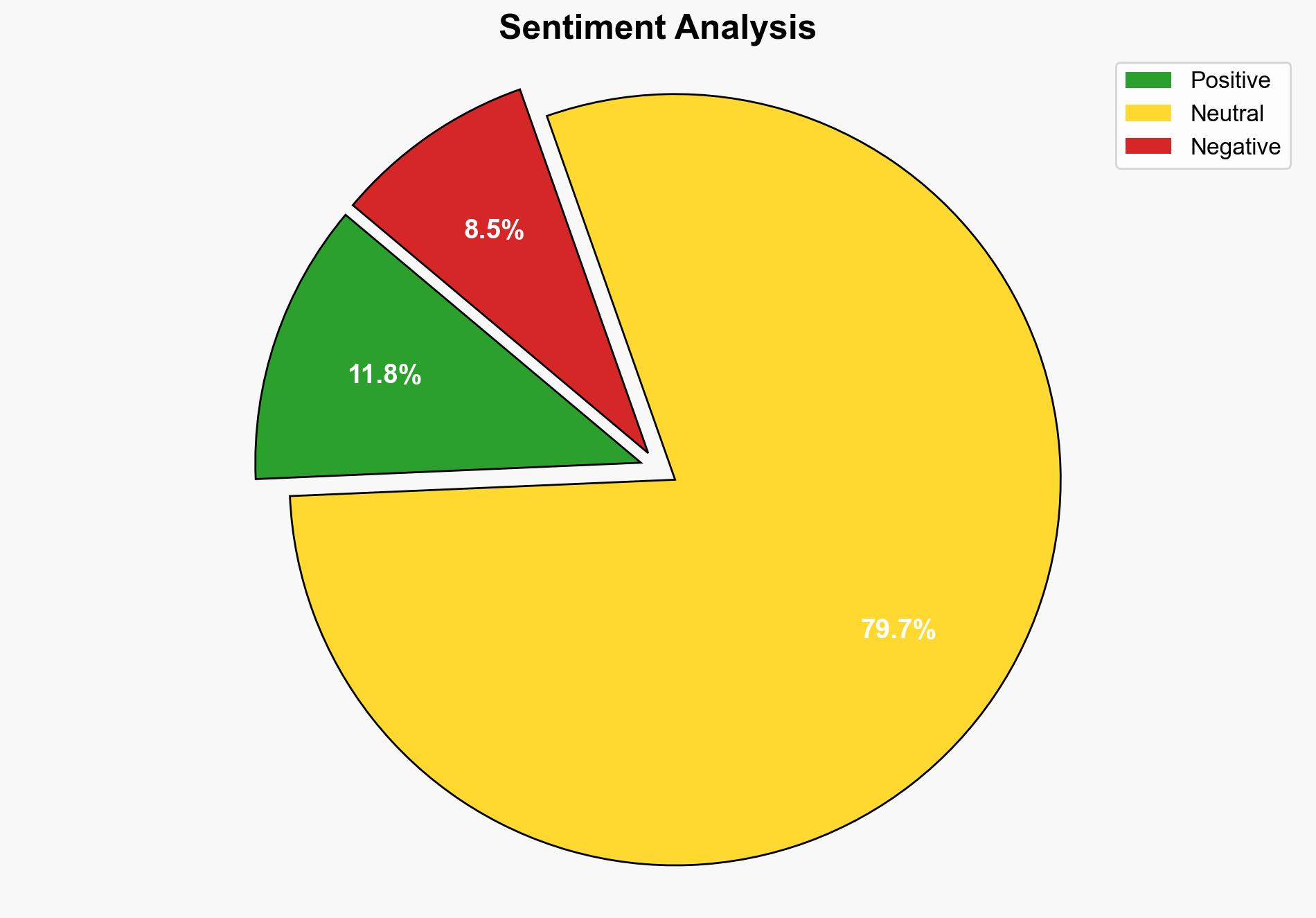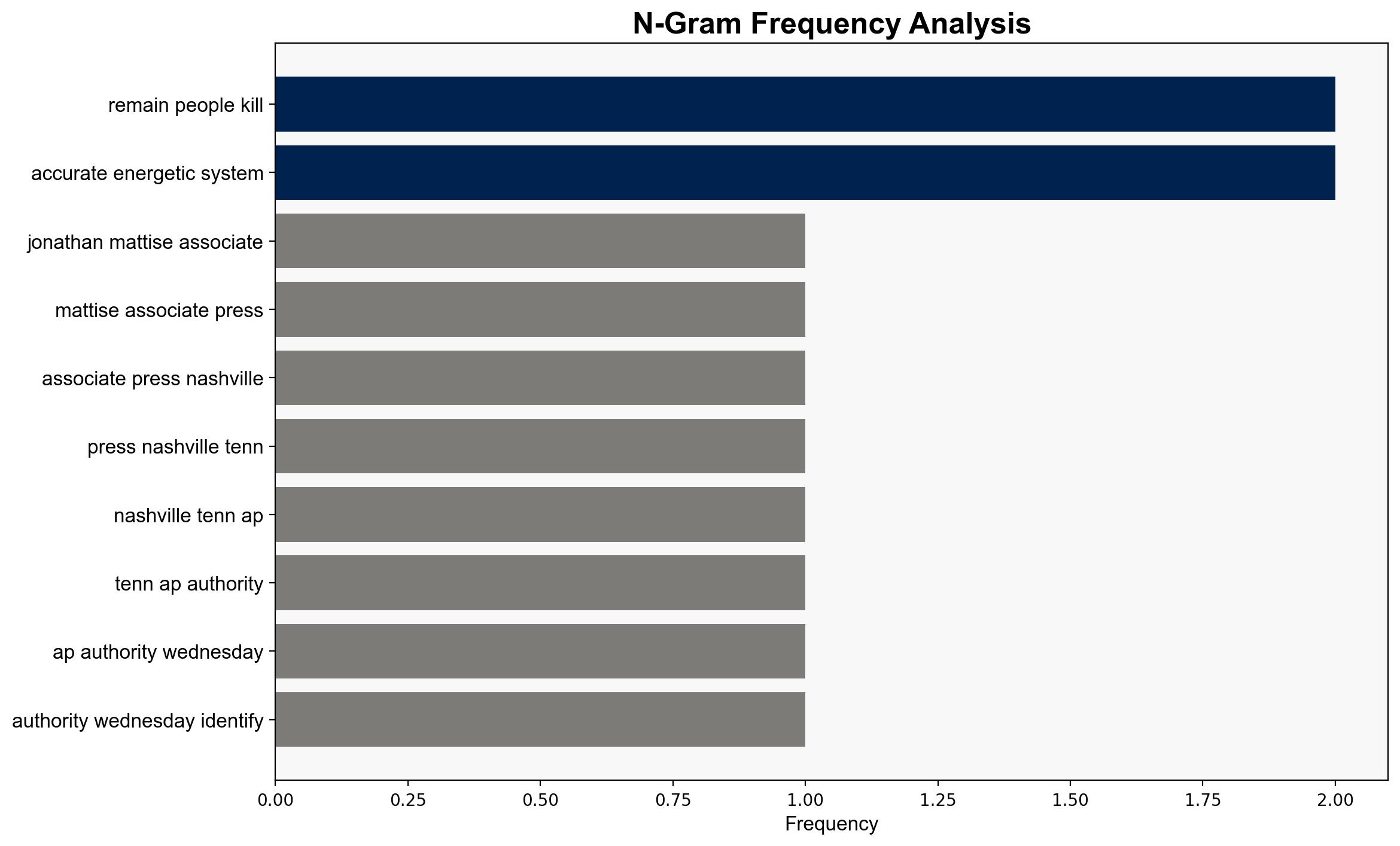Authorities identify remains of 14 of 16 victims in Tennessee explosion – Boston Herald
Published on: 2025-10-16
Intelligence Report: Authorities identify remains of 14 of 16 victims in Tennessee explosion – Boston Herald
1. BLUF (Bottom Line Up Front)
The most supported hypothesis is that the explosion at the Tennessee explosives plant was an industrial accident due to improper handling or storage of explosive materials. Confidence in this hypothesis is moderate due to the ongoing investigation and lack of conclusive evidence. Recommended action includes enhancing safety protocols at similar facilities and conducting thorough inspections to prevent future incidents.
2. Competing Hypotheses
1. **Industrial Accident Hypothesis**: The explosion was caused by improper handling or storage of explosive materials at the plant. This is supported by the plant’s history of handling dangerous materials and the complexity of the site.
2. **Deliberate Sabotage Hypothesis**: The explosion was a result of deliberate sabotage, potentially by a disgruntled employee or external actor. This hypothesis considers the plant’s military contracts and the potential for targeting by adversaries.
Using Analysis of Competing Hypotheses (ACH), the industrial accident hypothesis is better supported due to the absence of immediate evidence of foul play and the known risks associated with explosive material handling.
3. Key Assumptions and Red Flags
– **Assumptions**: The assumption that the plant’s safety protocols were followed and that no external actors had access to the site.
– **Red Flags**: Lack of detailed information on the plant’s safety record and potential security vulnerabilities. The rapid DNA identification process might overlook other forensic evidence.
– **Blind Spots**: Potential insider threats or external sabotage motives have not been thoroughly explored.
4. Implications and Strategic Risks
The explosion highlights vulnerabilities in facilities handling explosive materials, posing risks to national security and public safety. There is a risk of cascading effects if similar facilities do not reassess their safety measures. Economically, disruptions could affect military supply chains. Geopolitically, any confirmed sabotage could escalate tensions if linked to adversarial actions.
5. Recommendations and Outlook
- Conduct comprehensive safety audits and risk assessments at similar facilities.
- Enhance security measures, including background checks and surveillance, to prevent insider threats.
- Scenario-based projections:
- Best Case: Improved safety protocols prevent future incidents.
- Worst Case: Additional incidents occur due to overlooked vulnerabilities.
- Most Likely: Gradual improvements in safety and security measures reduce risk over time.
6. Key Individuals and Entities
– Jonathan Mattise
– Chris Davis
– Jamey VanVliet
– Accurate Energetic Systems
7. Thematic Tags
national security threats, industrial safety, counter-terrorism, regional focus





